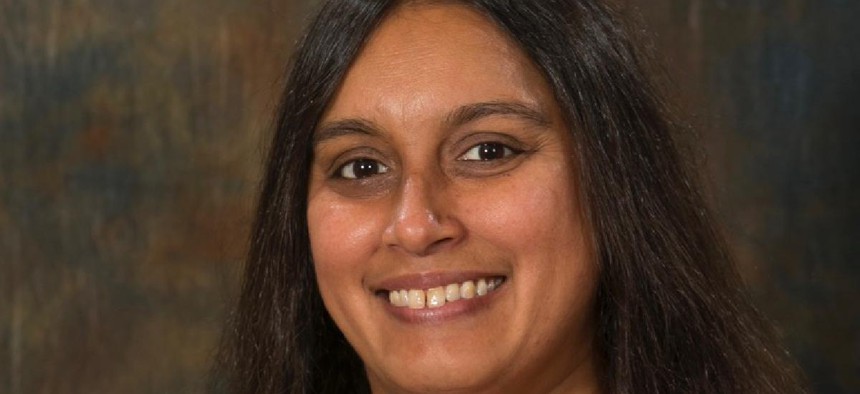C&S: Presidents Day is this week and Donald Trump is the first president from New York in decades. How does he compare to other presidents from the state?
MB: As with so much else in the 45th presidency, we’re in somewhat uncharted territory. In the list of New York presidents there’s the Roosevelts and in the 19th century, (Martin) Van Buren, (Millard) Fillmore, Grover Cleveland (born in Caldwell, New Jersey) and briefly Chester Arthur. Of course, Richard Nixon was not a native New Yorker, but New York did become his home for some time in the ’60s. What’s perhaps most interesting is that we haven’t had a president with lifelong ties to New York since World War II, so it’s been some 70 years. In a recent historical perspective, from the mid-1970s with Jimmy Carter pretty much through George W. Bush, with the one exception of Bush 41, you had presidents who had come from governor’s offices. There was a lot of discussion and studies of presidential leadership and whether the executive skills of a governor were better suited to the White House than (experience in) Congress or other institutions. And the Northeast has been viewed as a liberal bastion and so the idea of a president coming from New York seemed increasingly unlikely. Then in 2016, of course, both of the major party nominations were from New York, one in adulthood and one since birth. It’s another illustration of how 2016 has parted from traditional presidential politics, in that the person who won the election is a New Yorker, and from New York City, but not a traditional New Yorker as that has been defined in modern American politics. So it’s yet another contradiction – someone from the Northeast, born and bred in the Northeast, who identifies strongly with New York, but is by no means a prototypical image when you think of (U.S.) Sen. (Ted) Cruz’s criticisms of New York during the 2016 campaign. It kind of flies in the face of that.
C&S: Are there any parallels between Trump and past New York presidents?
MB: If you take it from when (Franklin Delano Roosevelt) was president, we were in the Great Depression, and then we move into the New Deal, World War II, we’re in an entirely different world now. So it’s a point of historical interest that we’re in some of these crisis situations and none of these other presidents from New York really governed in times like that. I guess you could say Theodore Roosevelt didn’t govern in crisis times but really, through the force of his individual leadership, exercised energy in the office. But it’s difficult to make generalizable patterns across all of the New York presidents. For example, to compare Chester Arthur, who of course became president after the death of President (James) Garfield, with Theodore Roosevelt or FDR or Donald Trump, it becomes difficult to find a substantive presidential leadership parallel. What’s more interesting is the modern New York presidents, and that would be FDR and Donald Trump, have governed in times where strong executive leadership is demanded and expected.
C&S: Was New York viewed in the past as a liberal bastion that separate from the rest of the country?
MB: New York was viewed differently. It was always urban and the financial center of the United States. You do have, in the 19th century, the urban-rural dynamic. We see that in the 1896 election, the cities versus the agricultural areas of the country. But the liberal-conservative dynamic that we’re talking about, that really dates from modern presidential politics. You could in some ways bring that back to FDR in the 1930s and the New Deal era. But more accurately that image of New York is when we get into the 1960s with the social protests and movements that played out across the country, but were important here. I think you began to see divisions in the country between the Southern states and the Northern states over civil rights (and) other protests over women’s rights. And then as we move into environmental issues and other subjects in New York City, the liberal versus conservative dynamic in American politics as we see it now really dates back to the 1960s.
C&S: So Trump is the surprise, having won the presidency in this environment as a candidate from New York.
MB: It’s stunning, the paradoxes. I’m the author of a textbook on the paradoxes of the American presidency, and you could almost write a textbook on the paradoxes of Donald Trump. He’s someone who’s viewed by his supporters as a populist president, yet he’s someone who was born into wealth and is an extremely wealthy person; who’s a born and bred New Yorker, loves New York, but is not identified politically – his presidential campaign at least – with the traditional New York politics, though his political views have shifted over time. Another paradox is a president who ran for office against the Washington elite, and when we look at state politics, New York is viewed as a kind of elite state, and that’s where President Trump is from but didn’t win his home state, which is significant. That is unusual in presidential politics. Maybe the last time that happened was (George) McGovern when he lost South Dakota in 1972, but he lost the race. In 1968, actually Nixon did not win New York, but because he was not a New Yorker that did not have the same significance. Trump won on the strength of states that are very unlike New York as far as population, diversity, standards of livings, job opportunities. … The only other president who lost their birth state and the state that they were governing in or were active in when they ran for the presidency might have been James Polk.


